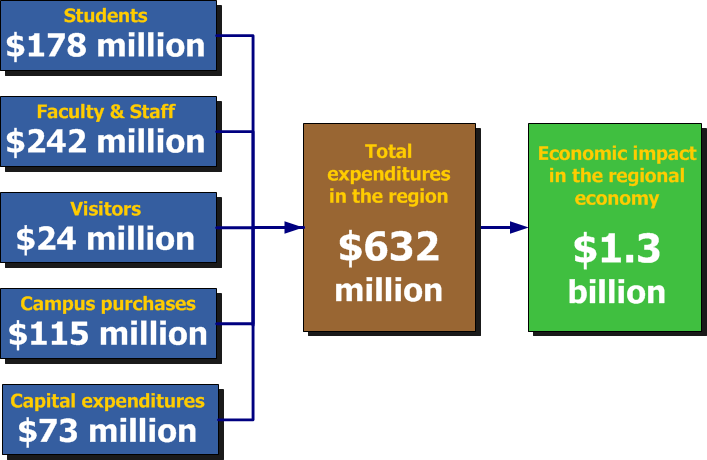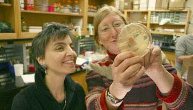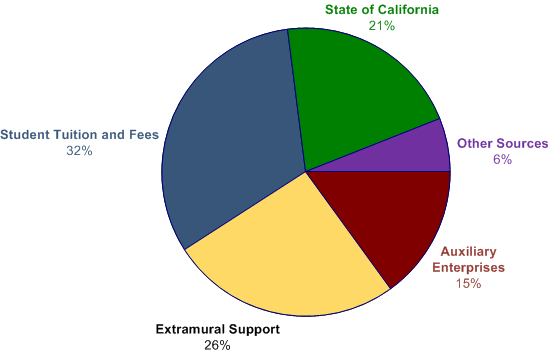Full Report
2011-12 Key Report Findings
UCSC generates $1.3 billion in economic activity within the Santa Cruz regional area
Expenditures by the UC Santa Cruz campus and its employees and students contribute to the economic health of the local economy
Economic Contributions
UC Santa Cruz's vital role in the regional economy (October 2012)
- (PDF) Economic Contributions - 2 page summary
Partners in Community
UC Santa Cruz strengthens the educational, economic, and cultural fabric of the entire Santa Cruz Community (October 2012)
- (PDF) Partners in Community - 2 page summary
State of the Campus
Chancellor's update on UC Santa Cruz—its progress, achievements, and challenges (September 24, 2012)
- Link to State of the Campus news story
UC Santa Cruz spending and economic contributions
The University of California, Santa Cruz, celebrated its 47th year in 2011-12. With educating California’s citizenry and operating as a national center for research to address real world issues among its primary missions, UCSC was also responsible for an estimated $1.3 billion dollars of economic activity in the Santa Cruz regional area.

UC Santa Cruz Economic Contributions, 2011-12
Expenditures by the campus, its employees, students, and visitors totaled $632 million in 2011-12, most of which is spent in the region. When calculated by an economic multiplier formula, the total regional expenditures increase to $1.3 billion.
Spending and re-spending in the local economy
UCSC fuels the local economy through its purchases of supplies and materials and its construction, as well as through spending by households with members employed as faculty and staff at the University. Student and visitor spending associated with the University also accounts for a substantial impact to area retailers and restaurants.
The full impact of UCSC spending in the regional economy is greater than the total of the University’s direct spending. This is because money spent by the University, students, and employees in the local community is spent again by local businesses and individuals receiving these dollars. In effect, the original dollars are spent and re-spent, creating a “multiplier” effect in the local economy.

Elena Baskin Visual Arts Center
Direct University spending for supplies and services, including on-campus housing and food services, totaled $115 million while expenditures for capital items and construction was $73 million.

Environmental Toxicologists Fitnat Yildiz and Karen Ottemann
Purchases made by University employees play a major role in the economic vitality of the community. In 2011-12, UCSC faculty, staff, and their immediate families spent an estimated $242 million on purchases and services in the Santa Cruz regional area. With 4,100 faculty and staff, UCSC is the top employer in Santa Cruz County—more than the next four largest employers combined. The campus employed 3,300 students.
The 16,704 students at UCSC during 2011-12 spent $178 million (after payment of university tuition and fees). The results of a 2012 survey also show that 44% of all UCSC students participate in local community service and volunteer activities.

Mascot Sammy the Slug with students
The campus also attracts thousands of visitors each year, including prospective students and their parents; guests of faculty, staff, and students; and others attending conferences and special events. These visitors spent an estimated $24 million locally in 2011-12.
Sources for campus funds

UC Santa Cruz Sources of Funds, 2012-13
the form of, for example, State of California appropriations; extramural support—including Federal contracts and grants, private gifts, and endowments; student tuition and fees; and students/employees using their personal resources to purchase services from campus auxiliaries (residence halls, bookstore, parking, etc.).
Thus, much of the money spent by the University represents new money to the community and generates new economic activity and jobs within the region that would otherwise not have occurred without the presence of the campus.
